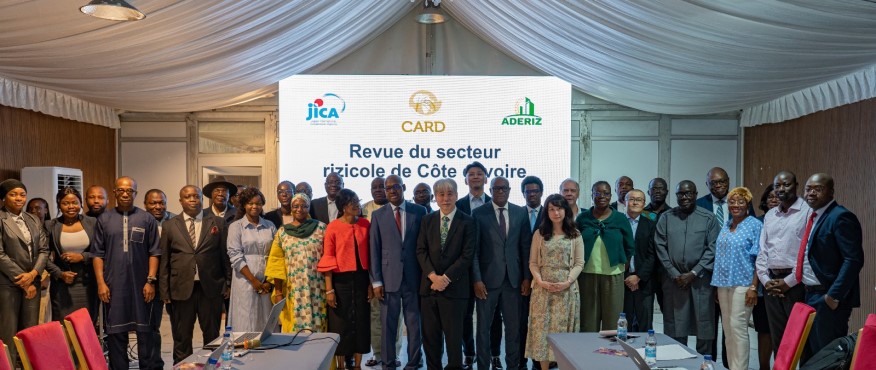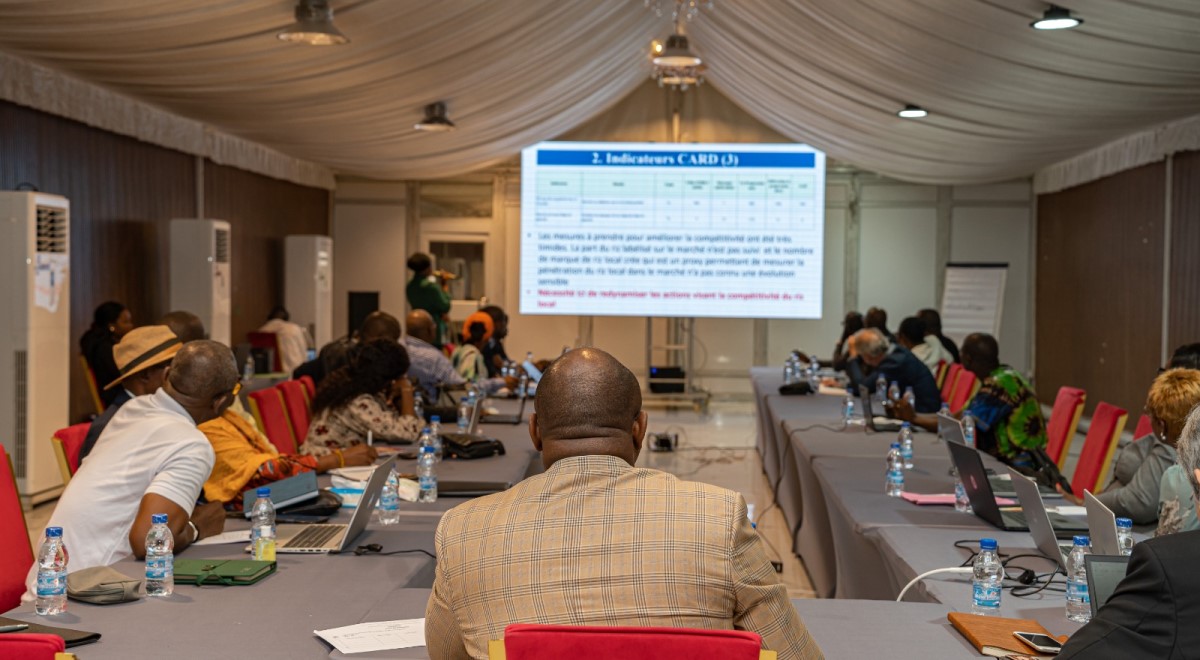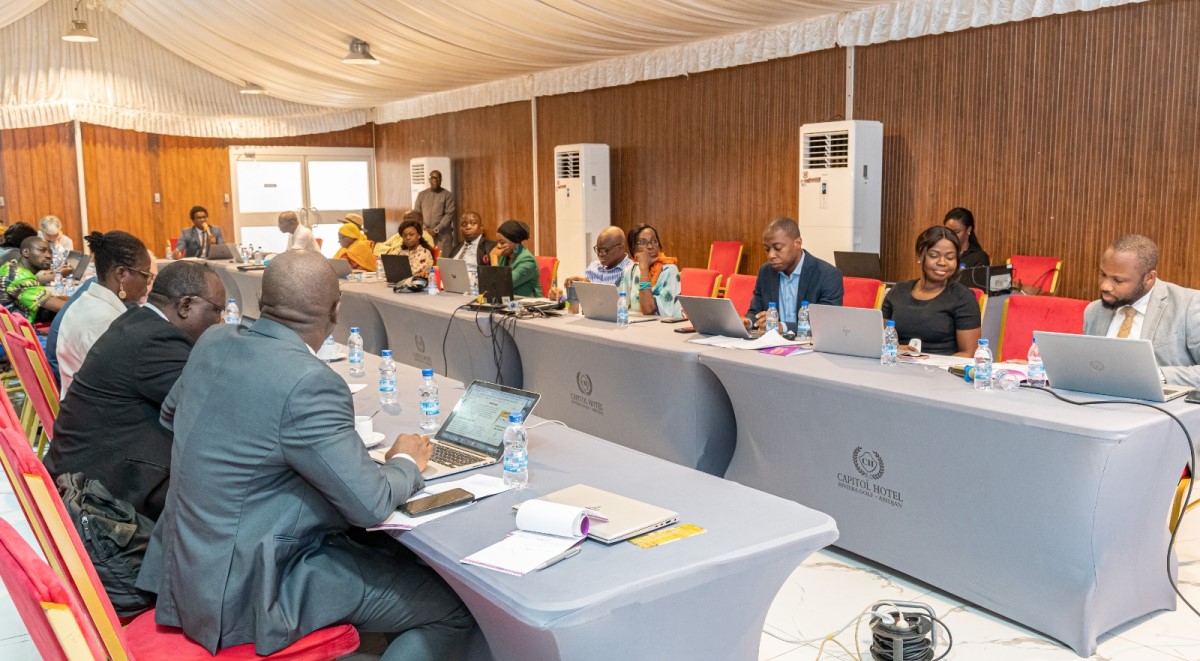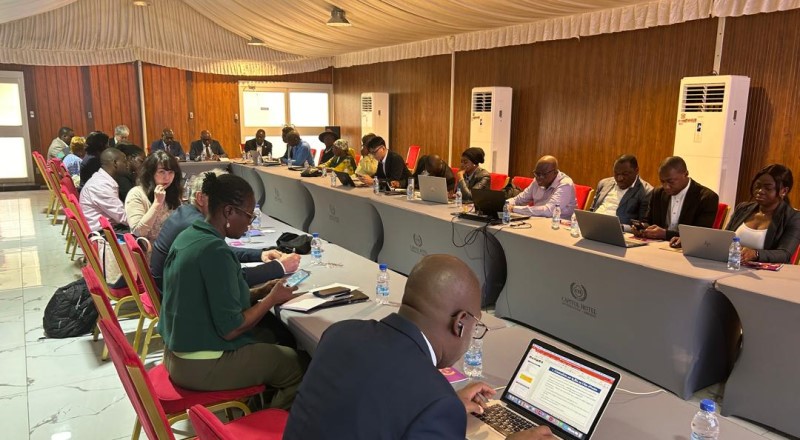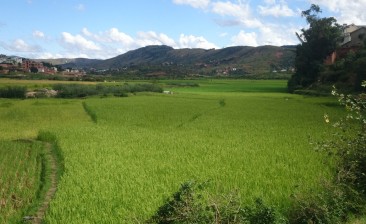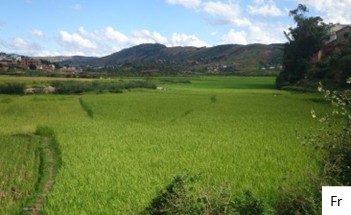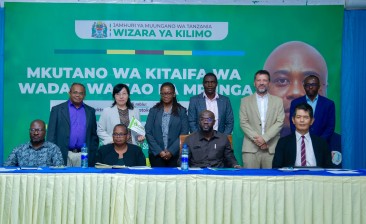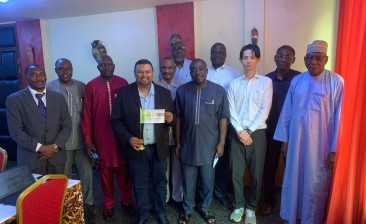Cote d’Ivoire, May 2024
The validation of the NRDS and the launching of the Annual Rice Sector Review Meeting in Cote d’Ivoire
From 27 to 28 May 2024 at the CAPITOL HOTEL (Abidjan), in accordance with the rice policy review process initiated by the CARD, was organized a workshop to contribute to the finalization of NRDS2 and launch the Annual Rice Sector Review Meeting. The workshop was attended by more than 40 peoples, including Technical and Financial Partners such as WB, ISDB, AFDB, JICA,UE, IFAD, EBID, FAO, UNIDO, Brazil Embassy, French Embassy, representatives of various sectoral ministries, Ministry of Agriculture, technical services, Private sector (Peters Group, JETRO, SIPRIZ SA, BNETD, EKOBELL, AllCOT, SODEXAM, BARAN, ACISTAN, RiceL and, Société Générale CI, ), ERO, farmers’ organizations and representative of projects implemented in the rice sector. The objective was to:
- Finalize and validate the strategy document with a view to its adoption in the national workshop;
- Present the harmonized indicators of the CARD;
- Finalize the NRDS 2 indicators.
NRDS 2
Regarding the revised NRDS2, all the participants agreed on the importance of reversing the trend by moving from rainfed to irrigated rice cultivation and wished for the revised NRDS to clearly reflect it instead of emphasizing on the desire to move towards rice cultivation resilient to climate change. The exchanges showed that it would be interesting to be more explicit on the type of varieties to be chosen regarding the seed to be subject of subsidies. In addition, the concerns clearly established that the strategy has to focus on the production of certify seeds with varieties that meets the consumers’ preference. To do so, the strategy have to clearly identify these varieties and include actions for their productions’. In addition, improving the productivity in rainfed rice cultivation areas would be an asset to achieve the objectives of rice self-sufficiency. Finally, the issue of preserving lowlands for rice cultivation was raised as a condition for the success of the strategy.
As for the gap analysis, the presentation of the Sub Sector Intervention Matrix (SIEM) highlighted the need to take into account all projects (existing, in progress, completed but with persistent effects over the period of the NRDS 2) in order to have a complete intervention SIEM. Also, it was wise to find the right wording to integrate the public intervention (such as those of ADERIZ) that are not carried out through the prism of a project but that participate in meeting the needs expressed in the strategy. At the end, it was decided to share the document with the participants in order to make their contributions and also, to add other project implemented by partners absent during the workshop. Also, the participants were invited to complete the information with the amounts allocated to the project by type of intervention in order to determine whether or not the resources released make it possible to meet the demand and thus identify the deficit areas to be financed in the sector.
Analysis of the indicators
The analysis of the indicators gives the trend of the rice sector during the last five (5) years (2019-2023) and allows to have the necessary arguments to put on the table in order to convince donors during the business meeting in the rice sector scheduled on July 2024. The result of the analysis shows that if the current pace is not accelerated, it will be difficult for the country to achieve the goal of rice self-sufficiency. Indeed, at the current rate, the coverage rate will be 50% by 2030 due to an average growth rate of 1.1% in production. As the highest progress is obtained in the rainfed lowland ecology and the current capacity for industrialization seems to meet the needs of the strategy, it is highly recommended that, in the short term, priority should be given to intensifying production in rainfed and lowland areas and in existing irrigated areas. In the medium and long term, while strengthening actions in rainfed and lowlands, proceed with the extension of irrigated areas. All these actions will have to be carried out with the full involvement of the private sector.
However, it is noticeable that actions in the area of competitiveness are insufficient due to low competitiveness of local. From this point of view, the priorities, in addition to production, should concern the improvement of the quality of the white rice produced, the creation of new local brands and the reduction of production and processing costs. In conclusion, it appears that an effort must be made to monitor indicators related to the empowerment of actors. On this point, the cations should concern support for the operation of the rice interprofessional and especially the strengthening of the technical and financial capacity of the actors.
Following the examination of the results of the analysis of the selected indicators, the participants were asked to review the selected indicators in order to better refine the various analyses. In this perspective, they suggested that in the list of varieties selected to feed the indicator relating to the “quantity of resilient seeds varieties produced” that varieties from upland ecologies should be included as well as new varieties that meets the consumers’ preference.
As regard to industrialization indicators, it was suggested to use “the rate of coverage of mechanization needs” rather than the number of equipment if the financial resources available allow it. In addition, it would be important to collect information on post-harvest losses.
Finally, participants requested to add an indicator on storage capacities by collecting the number of storage stores. On the competitiveness aspects, the indicators to be measured are the level of traceability of rice and the market share of local rice. Faced with the weakness of the data collected on the indicators, it was recommended to use alternative indicators on the alternative indicators proposed by CARD.
Regarding the price indicator, it was proposed not to set a price by 2030 but rather to move in the direction of the competitiveness of this price in relation to local production by proposing a price range.
At the end of the work, it emerged that the elements of improvement of the NRDS 2 as well as indicators will be taken into account. It was decided to rely on the conclusions of the gap analysis through the use of the SIEM and especially the results of the analysis of the indicators to reorient the proposals for action that will be submitted to donors during the business meeting (Round Table).
Autosuffisance en riz d’ici à 2030 : Les parties prenantes à la recherche d’indicateurs pertinents (newspaper article in French) Le but de la rencontre était de plancher et sortir des indicateurs et objectifs à atteindre pour la stratégie nationale de développement de la filière riz 2024-2030.
